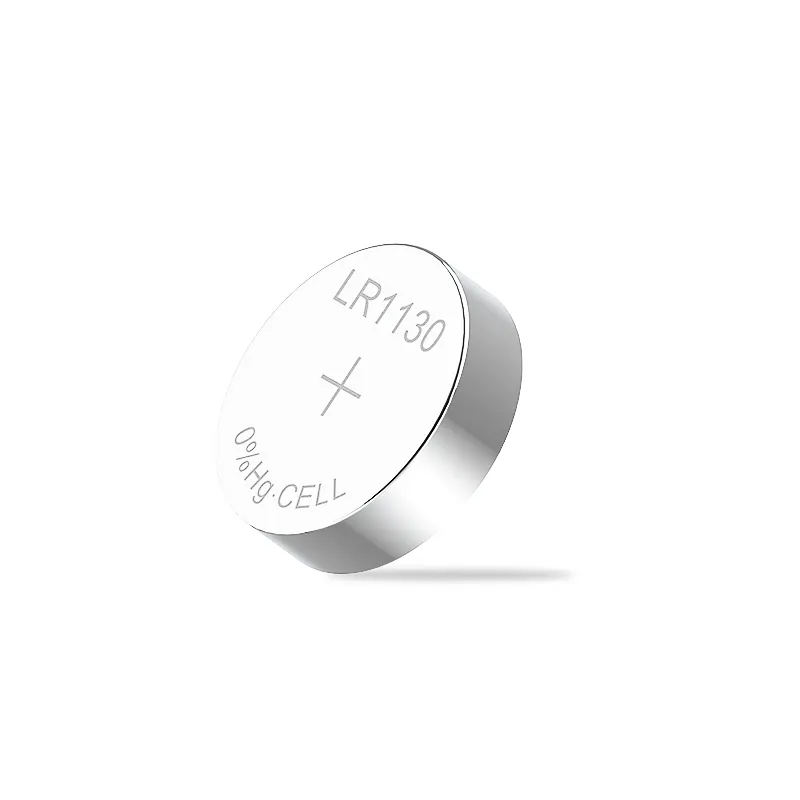Understanding the Differences Between Button Cell Types
When choosing the right power source for small electronic devices, understanding the nuances between different battery types is essential. Two common contenders in the world of small batteries are alkaline button cells and silver oxide batteries. Both are widely used in devices such as watches, calculators, hearing aids, and small medical devices. However, their chemistry, performance, and ideal applications vary significantly. This article explores these differences with a focus on alkaline button cells, comparing them to silver oxide batteries in multiple aspects to help you make an informed decision.
Composition and Chemistry of Button Cells
Basic Chemistry of Alkaline Button Cells
Alkaline button cells utilize a zinc anode and a manganese dioxide cathode with an alkaline electrolyte, usually potassium hydroxide. This chemistry is a derivative of the common alkaline battery but adapted for the compact button cell format. The electrochemical reactions in alkaline button cells provide a nominal voltage of about 1.5 volts, suitable for low to moderate drain applications. Their manufacturing costs tend to be lower, making alkaline button cells a cost-effective option for many devices.
How Silver Oxide Cells Are Constructed
Silver oxide batteries consist of a zinc anode and a silver oxide cathode with an alkaline electrolyte as well. However, the chemistry is more complex and allows for a more stable voltage output, generally around 1.55 volts. The silver oxide cathode’s high energy density results in longer-lasting power in a smaller form factor. Due to the presence of silver, these cells are typically more expensive but provide better performance in high-drain or precision devices.
Performance Characteristics
Voltage Stability and Energy Density
One key difference between alkaline button cells and silver oxide batteries is voltage stability. While alkaline button cells start at around 1.5 volts, their voltage tends to decline steadily during use. This characteristic may impact devices sensitive to voltage fluctuations. Conversely, silver oxide batteries maintain a stable voltage for most of their discharge cycle, ensuring consistent device performance until nearly depleted.
Energy density also differs significantly. Silver oxide cells offer higher energy density, meaning more power can be packed into a smaller battery, which is crucial for compact and power-sensitive applications. Alkaline button cells have lower energy density, so they may require more frequent replacement in demanding devices.
Shelf Life and Discharge Rates
Shelf life is an important factor in battery selection. Alkaline button cells generally have a shelf life of about 3 to 5 years, depending on storage conditions. Silver oxide batteries typically last longer on the shelf, often exceeding 5 years without significant capacity loss.
Regarding discharge rates, alkaline button cells perform adequately in low-drain devices but can struggle in high-drain scenarios. Silver oxide batteries excel in devices requiring steady and moderate power output, such as wristwatches or medical devices, offering more reliable longevity under load.

Application Suitability
Devices Ideal for Alkaline Button Cells
Alkaline button cells are well-suited for devices with intermittent or low power demands. Remote controls, simple toys, LED lights, and basic calculators often use alkaline button cells effectively. Their affordability and availability make them a popular choice for everyday applications where battery replacement is straightforward and cost is a concern.
Where Silver Oxide Cells Excel
Silver oxide batteries shine in applications demanding consistent voltage and longer operational times. Watches, hearing aids, and professional medical equipment rely on silver oxide cells to avoid performance degradation due to voltage drops. Additionally, devices that require compact power sources benefit from the higher energy density and smaller size of silver oxide cells.
Environmental and Economic Considerations
Cost Differences and Market Availability
Alkaline button cells are generally more affordable than silver oxide batteries, largely due to the less expensive raw materials and simpler manufacturing processes. This cost advantage makes alkaline button cells attractive for mass-market consumer products. However, the cost-benefit must be weighed against performance and longevity in specific use cases.
Silver oxide batteries, containing precious metals like silver, come at a higher price point. Despite the higher cost, their longer life and stable output can lead to savings by reducing replacement frequency and device downtime.
Environmental Impact and Recycling
Both alkaline button cells and silver oxide batteries contain materials that require proper disposal or recycling to prevent environmental harm. Alkaline batteries have fewer heavy metals but still should not be discarded in regular waste. Silver oxide batteries include silver, a valuable recyclable metal, making recycling programs economically beneficial and environmentally necessary.
Increasing consumer awareness and regulations are pushing manufacturers to develop more eco-friendly battery technologies and enhance recycling infrastructure for both battery types.
Technical Advancements and Trends
Innovations in Alkaline Button Cells
Recent advancements have focused on improving the energy density and leakage resistance of alkaline button cells. Enhanced sealing techniques and material improvements have made modern alkaline button cells more reliable and safer for various applications. Manufacturers are also working to extend shelf life and performance under different temperature conditions.
Evolving Silver Oxide Battery Technologies
Silver oxide batteries have seen innovations in miniaturization and enhanced electrochemical stability. These improvements enable use in ultra-compact and high-precision devices. Some silver oxide batteries now incorporate environmentally friendly materials and better sealing to reduce corrosion and leakage risks.
Making the Right Choice for Your Needs
Balancing Cost and Performance
When deciding between alkaline button cells and silver oxide batteries, consider the balance between upfront cost and device requirements. For low-drain, everyday devices, alkaline button cells often provide an economical solution. However, for precision instruments requiring stable voltage and longer battery life, silver oxide batteries are a superior choice despite the higher price.
Considering Device Specifications and Usage Patterns
Device voltage sensitivity, size constraints, and power consumption patterns are critical factors. Does the device require a consistent voltage for proper function? How often will the battery be replaced? What is the device’s power draw? Answering these questions helps narrow down the best battery type. Consulting manufacturer recommendations and battery datasheets is also advisable.
FAQ
What are the main differences between alkaline button cells and silver oxide batteries?
Alkaline button cells use zinc and manganese dioxide chemistry with about 1.5 volts nominal voltage but show declining voltage during use. Silver oxide batteries utilize zinc and silver oxide chemistry, providing a stable voltage near 1.55 volts and higher energy density.
Which battery type is better for high-drain devices?
Silver oxide batteries perform better in high-drain or precision devices due to their stable voltage output and higher energy density. Alkaline button cells are more suited for low to moderate drain applications.
How does cost influence the choice between these two battery types?
Alkaline button cells are generally cheaper and more suitable for mass-market, low-power devices. Silver oxide batteries cost more but offer longer life and stable voltage, which can reduce total cost of ownership in critical devices.
Are there environmental concerns with disposing of these batteries?
Both alkaline and silver oxide batteries should be recycled properly due to the metals and chemicals they contain. Silver oxide batteries contain silver, a valuable material that can be recovered, making recycling particularly beneficial.

